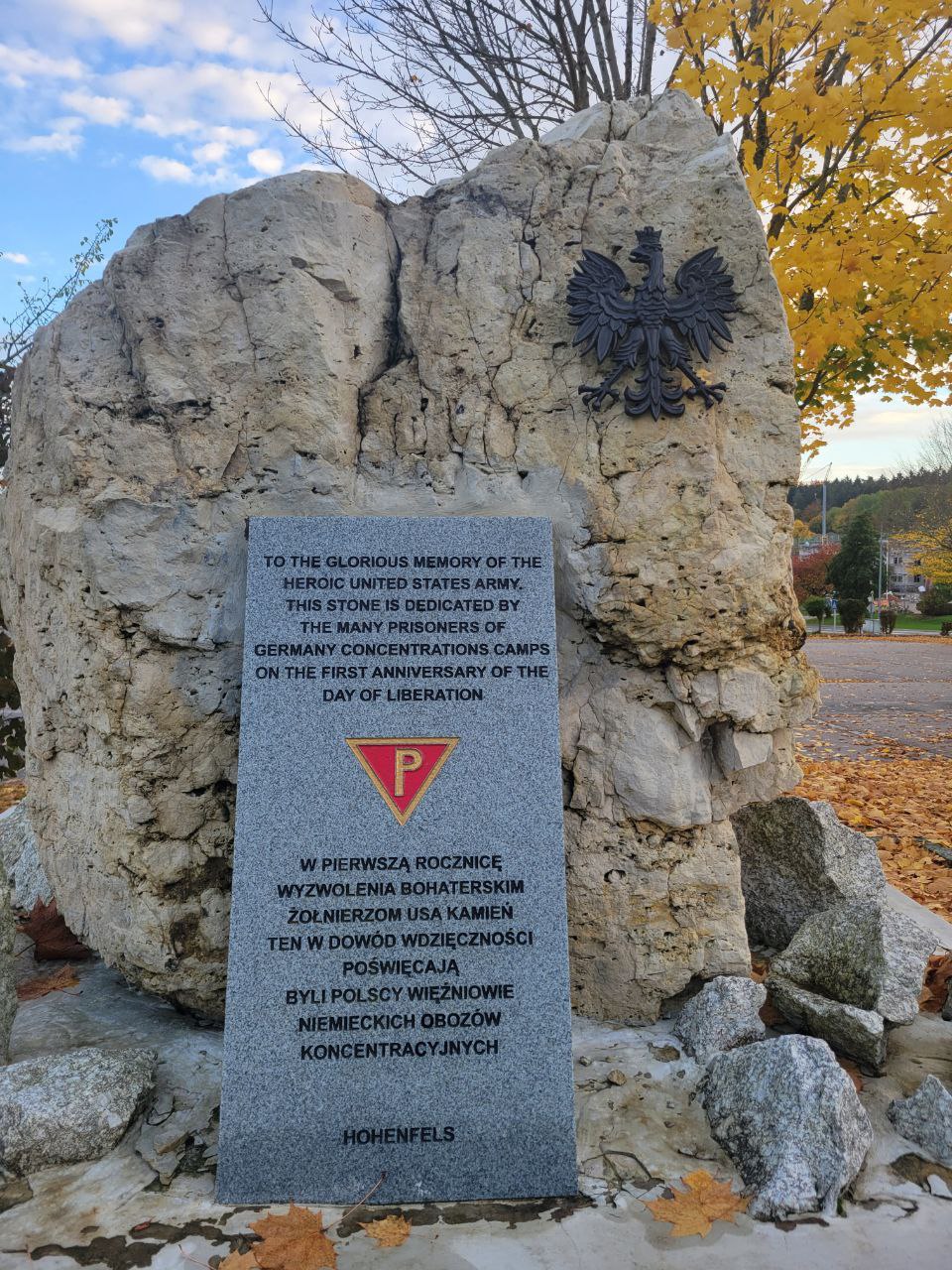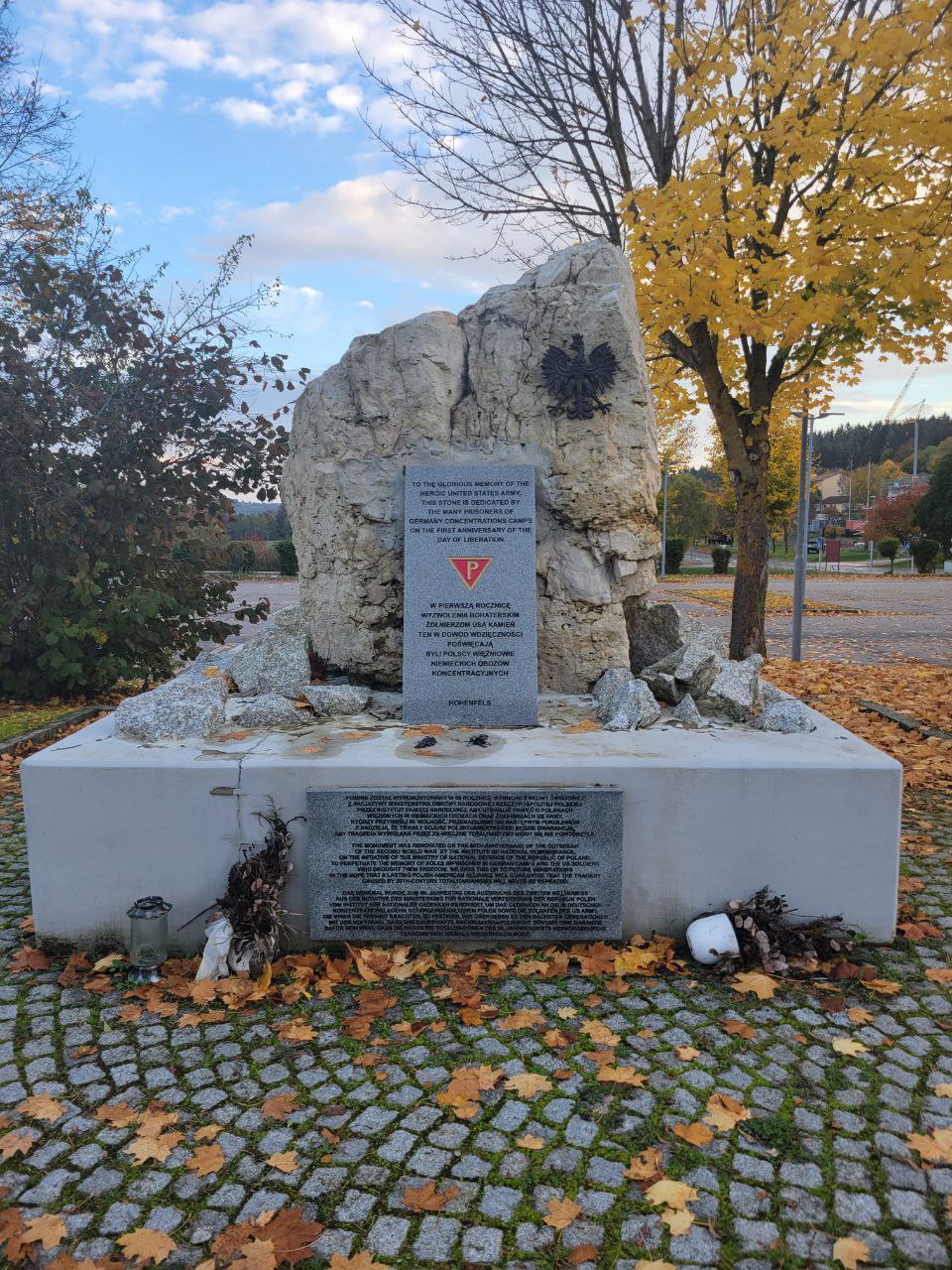Hohenfels US Army Monument
Details:
On the north side of the road.
Monument
A large rock affixed with a metal Polish heraldic Eagle on a concrete pedestal with attached granite plaques with an inverted red triangle with ‘P’ (the symbol of Nazi categorization of Poles in internment camps) with accompanying text. The text is written in English and Polish. The renovated Polish monument serves to perpetuate the memory of the Polish displaced people who lived at Hohenfels after World War II.
In 1937, the German Army High Command approved the acquisition of the area contained by Hohenfels, Rohrbach, Schmidmuehlen, Hohenburg, Martinsburg, Judenfeld, Schmidheim, and Grossbissendorf. The United States Army requisitioned the Hohenfels training area in 1951. It is now home to the Joint Multinational Readiness Center (JMRC) and is part of the Army's Joint Multinational Training Command (JMTC). The Hohenfels installation comprises over 40,000 acres and is the second-largest maneuver area available to United States service members in Europe.
The former Reichsumsiedlungsgesellschaft Berlin (resettlement organization), tasked with reimbursing the owners for the land required for the training area, began its activities on April 1, 1938. Five hundred forty-four properties and farms fell into a category relative to an eminent domain. However, the outbreak of World War II changed the outcome of the Hohenfels training area. In the autumn of 1939, Polish prisoners of war (POW’s) began to arrive at Hohenfels. Then, from 1939 to 1945, the Hohenfels area became a POW camp known as Stalag 383. From 1945 to 1949, it became a displaced person camp. Some POW’s could not afford to return home, and former internees from the German concentration camps of Flossenbuerg, Hersbruck, and Buchenwald arrived at the camp. From 1945 to 1949, a cemetery and three Polish monuments were added to the complex by former Polish POW’s and Polish displaced persons.
On April 24, 1945, the 65th U.S. Infantry Division, under Major General Stanley Reinhart's leadership, came to Hohenfels and liberated Stalag 383. One year later, the remaining Polish refugees created a monument to honor the United States soldiers who liberated them. Over half the POW’s at Stalag 383 were Polish. During this time, former Polish prisoners built a cemetery north of Unteroedenhart for the many displaced persons, mainly Polish, who died during a typhoid epidemic.
Source of photo and information: www.worldwariimonuments.org
Monument Text:
TO THE GLORIOUS MEMORY OF THE
HEROIC UNITED STATES ARMY.
THIS STONE IS DEDICATED BY
THE MANY PRISONERS OF
GERMAN CONCENTRATION CAMPS
ON THE FIRST ANNIVERSARY OF THE
DAY OF LIBERATION.
W PIERWSZĄ ROCZNICĘ
WYZWOLENIA BOHATERSKIM
ŹOŁNIERZOM USA KAMIEŃ
TEN W DOWÓD WDZIĘCZNOŚCI
POŚWIĘCAJĄ
BYLI POLSCY WIĘŹNIOWIE
NIEMIECKICH OBOZÓW
KONCENTRACY JYNCH
HOHENFELS
Commemorates:
Units:
65th Infantry Division
United States Army
Wars:
WWII
Battles:
Holocaust Camp Liberation
Other images :


